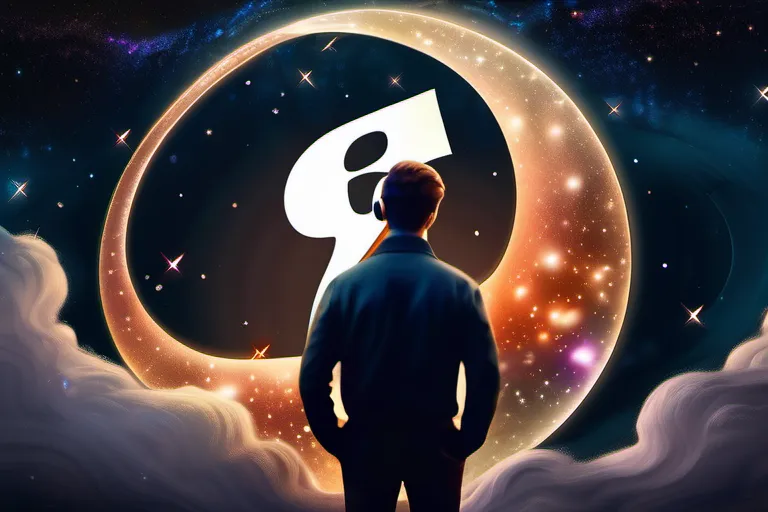Explore the philosophical, religious, and scientific perspectives on the existence of the soul.
Delve into the age-old question: Is there a soul? This article will examine various theories from philosophy, religion, and science to provide a well-rounded understanding of this complex topic.
The Philosophical Perspective: Plato and Descartes
Is there a soul? This question has puzzled thinkers for millennia, from ancient philosophers to modern-day scientists. Let’s delve into the philosophical perspective on this eternal query by exploring the ideas of two key figures: Plato and René Descartes.
Plato, with his deep dive into the realms of Forms, proposed that our souls are immortal and preexist in a realm beyond the physical world. He likened our soul to a charioteer guiding a team of horses; just as the soul must navigate the complexities of life, it is also a guide to the truth. In Plato’s philosophy, every human soul contains fragments of knowledge from its eternal existence before birth.
Imagine your soul as a library that carries all the books you’ve read in previous lives. Each character and experience you encounter in this life could be like opening a new book or chapter, adding to your vast collection of wisdom and understanding. Plato’s concept is not just about survival after death; it’s about the eternal journey of the soul towards knowledge and truth.
Descartes, on the other hand, introduced a radical shift with his Meditations on First Philosophy. He famously stated ‘I think, therefore I am,’ emphasizing that our minds are separate from our bodies. Descartes proposed that the mind (or soul) is an immaterial substance, distinct from the physical body. This idea of dualism suggests a battle between reason and emotion, where the rational soul governs the chaotic physical world.
Think of your soul as a delicate dance partner; while your body moves through life’s challenges, it’s the soul that leads with precision and direction. The mind-body split proposed by Descartes is like having two separate entities: one that can think abstractly and one that experiences physical sensations. This division sparked countless debates on how these two aspects interact.
The Religious Perspective: Soul in Major World Religions
The question of whether there is a soul has long been a subject of intense debate, particularly within religious contexts. In Christianity, the soul is often seen as the essence of a person, created by God at conception and immortal. Christians believe in the resurrection of the body and the eternal life of the soul in heaven or hell after death. But what exactly gives rise to this belief? Is it mere faith or can there be some evidence within religious texts?
In Islam, the concept of nafs (soul) is closely tied to one’s actions and their impact on judgment day. Muslims believe that every person has a soul which is tested through life choices. The afterlife is seen as a continuation of this test, where souls will be judged based on their deeds. How do these beliefs shape the moral compass of believers? Could there be an underlying psychological or spiritual explanation for such teachings?
Hinduism presents a more complex view of the soul, known as jiva. It is believed that the soul is eternal and reincarnates until it achieves liberation (moksha). The path to moksha involves understanding one’s true self (atman) and detaching from material desires. Here, the journey of the soul is intertwined with spiritual practices like meditation and yoga. How do these practices influence the belief in the soul’s continuous existence?
Buddhism offers a unique perspective, viewing the concept of the self as an illusion. Instead of a permanent soul, Buddhism speaks of anatta, or no-self. However, there is still a sense of continuity through the process of rebirth. This raises questions about personal identity and the nature of consciousness. How can one believe in reincarnation without a fixed soul?
In exploring these diverse religious perspectives on the soul, we are drawn into a rich tapestry of beliefs and practices. Each religion offers a unique lens through which to understand the human experience and our place within the universe. But beyond the sacred texts and rituals, do these ideas resonate with scientific understanding? How might contemporary neuroscience contribute to or challenge traditional views of the soul?
The Scientific Perspective: The Brain and Consciousness
The Scientific Perspective: The Brain and Consciousness
Can we understand the soul through the lens of science?
Imagine your brain as a complex city, bustling with activity 24/7. Every thought, feeling, and action is like a train moving along its tracks, but where do these trains originate? Are they generated by the physical structure itself or are there unseen forces at play?
Science has made significant strides in understanding brain function and consciousness. Neuroscientists explore how neural networks create our perceptions, emotions, and memories. But when it comes to the soul—this intangible essence that seems to transcend the physical body—the scientific community remains largely agnostic.
Is there a non-physical soul? Some researchers propose theories where consciousness arises from quantum processes in the brain, hinting at a possible link between the physical and the metaphysical. However, these ideas are still highly speculative and not widely accepted within mainstream neuroscience.
The debate over whether consciousness is purely physical or involves some non-physical aspect of the soul continues to captivate both scientists and philosophers alike. Until we can definitively answer this question, the concept of the soul remains a fascinating enigma, inviting us to explore the depths of our understanding of self and existence.
The Soul in Modern Thought: Existentialism and Transhumanism
As we delve into the modern philosophical landscape, existentialism and transhumanism offer us fresh perspectives on the age-old question: Is there a soul? Existentialists like Jean-Paul Sartre and Martin Heidegger argue that the essence of human existence lies in our freedom and responsibility for creating our own meaning. Here, the soul is not something we are born with but something we fashion through our choices and actions.
Is it not a profound question to ponder: Can we truly grasp the essence of who we are if we focus solely on our physical existence? In existentialism, the concept of a soul might be seen more as an existential quest—a journey towards self-discovery and authenticity. It’s like wandering in a vast forest without a map; each path you take is a step towards finding your own spiritual compass.
On the other side, transhumanism presents a distinctly different view. Proponents of this philosophy believe that human enhancement through technology could lead to new forms of existence, possibly transcending our current biological limitations. Here, the soul might be seen as a mutable entity that can evolve with the advances in science and technology. It’s as if we are not just exploring the forest but also building bridges over rivers within it, crafting a future where the soul is no longer confined by its traditional boundaries.
So, does this mean that existentialism and transhumanism are at odds in their approach to the concept of the soul? Not necessarily. Both philosophies challenge us to consider what it means to be human in a world where our understanding of self and existence is constantly evolving. The soul, therefore, becomes a dynamic entity, shifting and adapting with the changing tides of human thought and technology.
The Soul in Art and Literature: Symbolic Representations
Throughout history, artists and writers have often turned to the soul as a profound subject for their creations. It’s almost as if the human quest for understanding this elusive concept has driven them to depict the soul in various forms of art and literature. How do they represent something that is so intangible? Is there a common thread that ties these symbolic representations together?
In paintings, the soul might be portrayed through swirling colors or ethereal faces, hinting at an inner world beyond what meets the eye. Think of Van Gogh’s Starry Night, where the swirling sky seems to symbolize a tumultuous, emotional landscape within his mind and heart. Could it be that these artworks are not just visual pleasures but also windows into the human soul?
Literature too offers profound insights into the soul. In Shakespeare’s Hamlet, the character’s indecision reflects deeper questions about identity and existence. The soliloquies, with their haunting reflections on life and death, echo the very essence of a soul grappling with its own mortality. Could it be that such literary works are more than just stories—they are vehicles for exploring the human condition?
These symbolic representations serve as mirrors, reflecting back to us our deepest fears, hopes, and mysteries. Whether through the vivid brushstrokes of a painter or the intricate words of a writer, these depictions invite us to ponder what lies within ourselves. How do we reconcile these artistic expressions with modern scientific understanding? Do they offer any insights that can bridge the gap between philosophy and science?
The soul in art and literature is not just a theme; it’s a journey through the human experience, a reflection of our quest for meaning. Each work of art or literature is like a key, unlocking different aspects of the soul, urging us to delve deeper into our own inner worlds.
The Future of the Soul Debate: Emerging Ideas and Questions
As we step into the future, the debate about the soul continues to evolve, blending traditional philosophical and spiritual inquiries with emerging technological advancements. How will our understanding of consciousness and self be reshaped by artificial intelligence (AI) and brain-computer interfaces? Could these technologies offer new insights or even challenge the very notion of a soul?
Imagine a world where AI can replicate human emotions and experiences, could this replication be considered a form of soul? What if we create digital versions of ourselves that live on after our physical bodies have passed? Do these virtual entities carry any spiritual weight or are they merely extensions of code and data?
The impact of technology on the soul debate is not limited to its creation. As brain-computer interfaces become more advanced, they could potentially enhance human cognitive abilities. But at what cost? Could such enhancements blur the lines between natural and artificial intelligence, challenging our very understanding of what it means to be alive with a soul?
Moreover, as we delve deeper into the intricacies of consciousness through scientific inquiry, new questions arise. Can consciousness exist independently of the physical brain? If so, does this imply that souls are not confined by matter but can transcend the body altogether? The search for answers to these questions could lead us down paths where the concept of the soul is redefined or even abandoned.
As we look towards the future, one thing remains clear: the debate about the soul will continue to be a vibrant and dynamic conversation, intertwining with technological advancements and scientific discoveries. Will technology help us discover new facets of the soul or challenge our deepest beliefs? The journey ahead is as intriguing as it is uncertain.
Conclusion
 By the end of this article, you’ll have gained valuable insights into the debate surrounding the existence of the soul. Whether you lean towards a philosophical, religious, or scientific perspective, this guide will broaden your understanding and deepen your curiosity.
By the end of this article, you’ll have gained valuable insights into the debate surrounding the existence of the soul. Whether you lean towards a philosophical, religious, or scientific perspective, this guide will broaden your understanding and deepen your curiosity.











